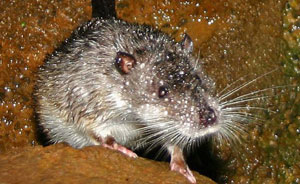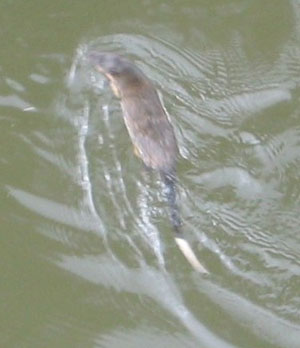Tom Parkinson's monthly column, introducing the diverse range of flora and fauna on show at Sanctuary Lakes.
 I saw my first Rakali after completing a very ordinary Tee shot off the par 3 second; looking towards the pond which is renowned for its magnetic influence on golf balls, I saw a bold V wake on the water apexed by what I thought was a platypus moving at speed towards the reeds. Golfing etiquette of silence while companions tee off, meant I was unable to discuss the moment and due to a further factual evidence of the ponds magnetic influence from my companion's tee shot, I forgot the incident.
I saw my first Rakali after completing a very ordinary Tee shot off the par 3 second; looking towards the pond which is renowned for its magnetic influence on golf balls, I saw a bold V wake on the water apexed by what I thought was a platypus moving at speed towards the reeds. Golfing etiquette of silence while companions tee off, meant I was unable to discuss the moment and due to a further factual evidence of the ponds magnetic influence from my companion's tee shot, I forgot the incident.
About three weeks later in the early evening, I was at the bottom of my garden when I again saw the rapidly moving bold V wake, this time crossing the lake from under the SL Health Club Gymnasium towards the mouth of the canal. It then jumped on to the partly submerged fountain supply pipe and displayed itself as a truly unique mammal - the Rakali or Aussie Water-rat or Hydromys chrysogaster meaning "water-mouse with golden belly". It's a lovely description though not quite accurate as there can be considerable variations in coat colour, and some don't have a golden belly. Colour ranges from Black/dark brown with a golden or orange underside to Grey/brown with a creamy white underside. They are also considerably bigger than a mouse! An adult Rakali can measure up to 37 cm and weigh over 1.5 kilos.
 Like all the best Aussies, they are a bit of a mix: a bit of Otter, a bit of Beaver with rich thick fur, webbed hind feet, and a Possum's tail with a distinctive white tip. They often share with the Platypus the same river bank burrows for breeding which is why they were thought to be cousins. In fact there are no close relatives in Australia, although a similar species is found in the New Guinea region.
Like all the best Aussies, they are a bit of a mix: a bit of Otter, a bit of Beaver with rich thick fur, webbed hind feet, and a Possum's tail with a distinctive white tip. They often share with the Platypus the same river bank burrows for breeding which is why they were thought to be cousins. In fact there are no close relatives in Australia, although a similar species is found in the New Guinea region.
Rakali have relatively short life spans, normally they survive for a maximum of about 3-4 years in the wild. Females generally first breed within a year and will raise two or three litters of young in twelve months.
Friends who live on the S L Canal say they have seen Rakali taking an evening swim or foraging the footpath. Naturalist Bob Winters who lives on Skeleton Creek often views them typically at sunset along the creek. Bob believes that, there appears to be a stable population in Sanctuary Lakes and its environs of possibly up to 25 adults covering about three generations.
Rakali favourite foods includes water insects, mussels, fish, crustaceans, frogs, small birds and their eggs, making Sanctuary Lakes an ideal habitat. Rakali is a nocturnal animal, therefore the best time to view is dawn or dusk. Besides the Canal and Skeleton Creek, there appears to be a one or two families in the rocks under the Health Club and possibly others in burrows on the banks around the island green of the 18th hole. Take a look one evening or early morning, you never know your luck at viewing one of Australia's shyest and least known native mammals.
And yet another one of our wonderful Sanctuary Lakes neighbours!